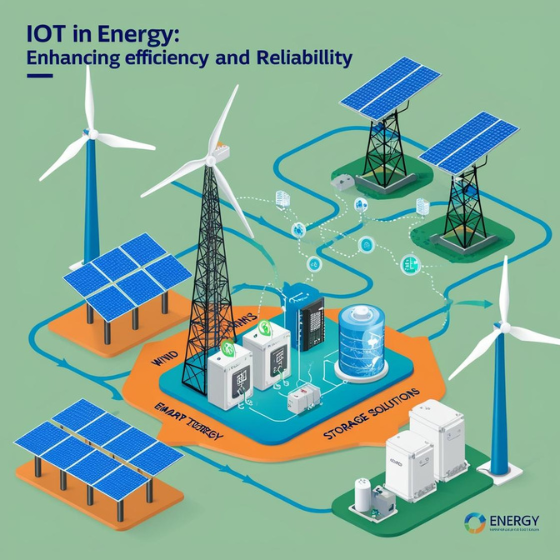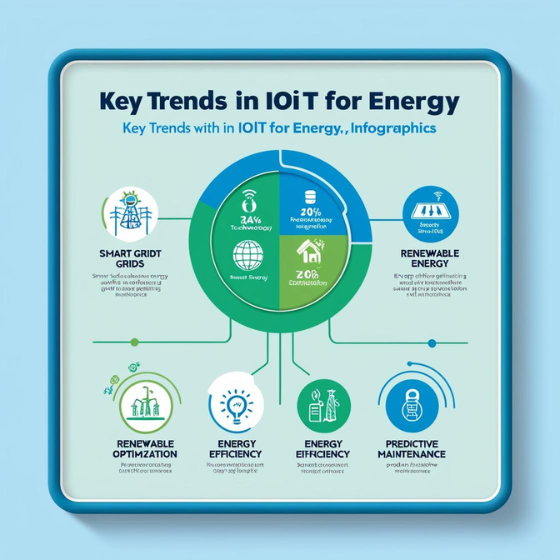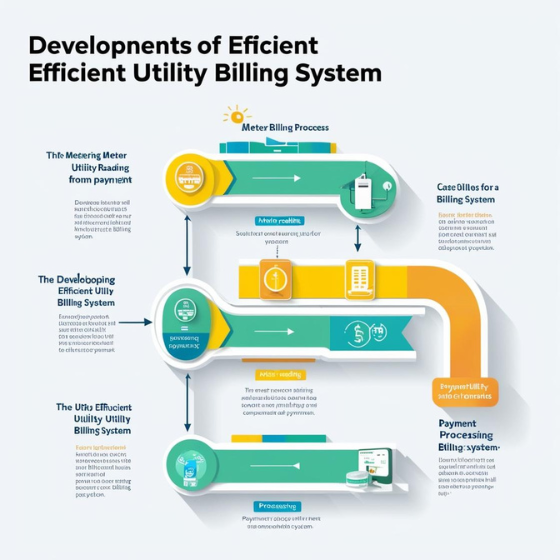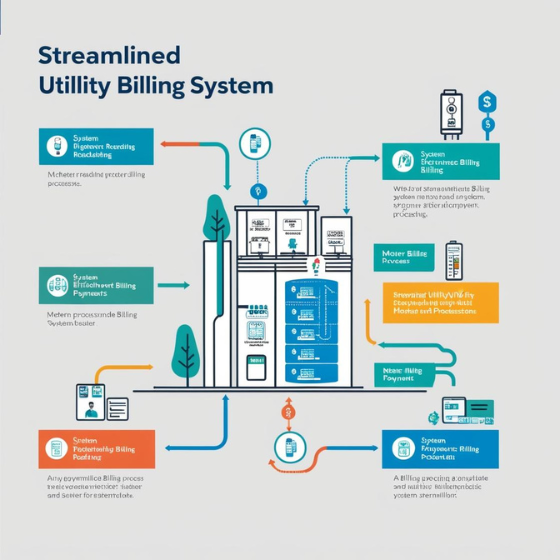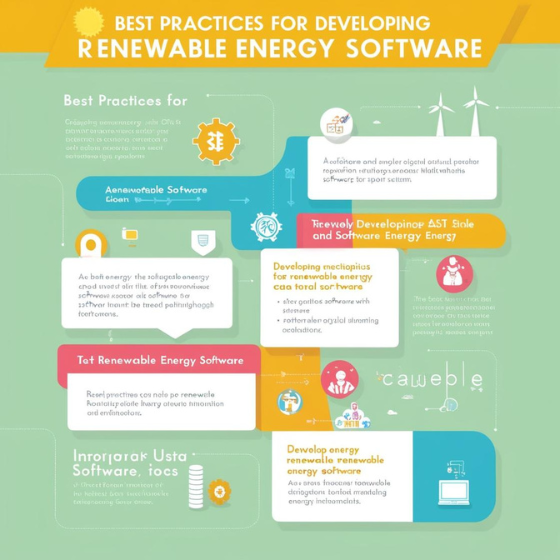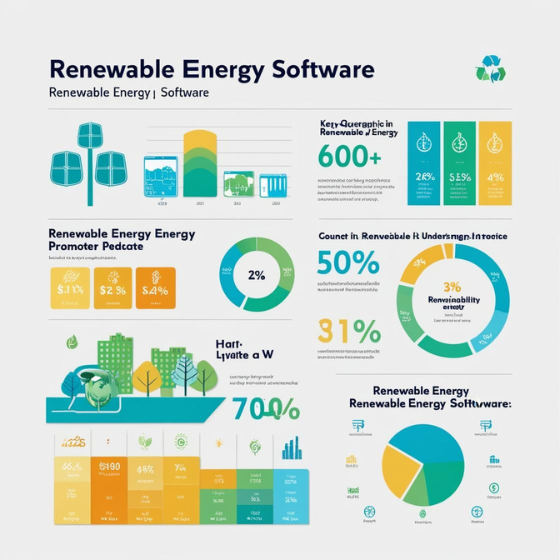IoT in Energy: Enhancing Efficiency and Reliability
The Internet of Things (IoT) is revolutionizing industries worldwide, and the energy sector is no exception. As the need for sustainable, reliable, and efficient energy solutions increases, IoT is becoming essential for optimizing energy usage, improving grid management, and ensuring dependable service. In this blog, we’ll explore how IoT in energy enhances both efficiency and reliability, offering actionable insights for energy providers, businesses, and consumers.
What is IoT in Energy?
The Internet of Things (IoT) refers to a network of connected devices that communicate and share data with one another. In energy, IoT involves the use of smart devices and sensors to monitor energy consumption, optimize usage, and improve grid performance. This data-driven approach empowers utilities and consumers to make smarter decisions, reduce waste, and enhance energy efficiency.
Key Components of IoT in Energy:
- Smart Meters: Measure and report energy consumption in real time.
- Sensors: Installed on infrastructure like power lines and generation plants to collect performance data.
- Advanced Communication Networks: Enable secure, real-time transmission of data between devices and central systems.
- Cloud-Based Platforms: Centralize data collection, monitoring, and analytics for better decision-making.
How IoT is Enhancing Energy Efficiency
1. Real-Time Monitoring and Data Collection
IoT enables real-time data collection on energy use, which helps identify inefficiencies. Smart meters and sensors provide continuous feedback, allowing utilities and businesses to adjust their usage patterns.
- Smart Meters: Automatically send energy usage data to utility companies, reducing the need for manual readings and minimizing errors. This helps optimize billing and energy distribution.
- Energy Audits: With IoT, businesses can gain detailed insights into their energy consumption, pinpointing areas where improvements can be made to cut down on waste and reduce costs.
2. Predictive Maintenance and Fault Detection
IoT sensors also monitor critical infrastructure, such as transformers and power lines. By analyzing data, these devices can predict when equipment is likely to fail, allowing for preventive maintenance.
- Example: If a transformer shows unusual voltage behavior, IoT sensors can alert the utility, prompting a technician to check the equipment before it causes an outage.
- Benefits: This predictive approach reduces downtime, lowers repair costs, and improves the overall reliability of energy systems.
3. Energy Optimization in Real-Time
IoT systems can automatically adjust energy use based on demand and other factors, optimizing consumption. For example, smart thermostats can reduce heating or cooling during peak hours, while smart appliances can be set to run during off-peak times to lower costs.
- Smart Grid: A key application of IoT in energy, the smart grid uses real-time data to balance energy distribution across regions. This system dynamically adjusts based on demand, improving efficiency.
- Demand Response: By leveraging IoT data, energy providers can implement demand response programs. These programs incentivize consumers to reduce usage during peak hours, preventing grid overloads.
How IoT Improves Energy Reliability
1. Enhanced Grid Monitoring and Control
IoT improves grid reliability by providing real-time monitoring and control. Sensors placed across the grid detect faults, voltage drops, and overloads, allowing grid operators to respond promptly.
- Fault Detection: If a fault occurs, IoT devices can quickly locate the issue, speeding up recovery times and reducing service interruptions.
- Voltage Regulation: IoT helps ensure consistent voltage levels across the grid, minimizing disruptions and improving overall energy quality.
2. Smart Energy Storage and Distribution
IoT is also crucial for managing energy storage, particularly with renewable sources like solar and wind. These sources are intermittent, so efficient storage and distribution are essential. IoT devices help optimize when and how energy is stored or dispatched.
- Battery Storage Systems: IoT sensors monitor battery charge levels, efficiency, and performance, ensuring that stored energy is available when needed.
- Renewable Energy Integration: IoT enables smooth integration of renewable sources into the grid, making sure that energy is distributed when demand spikes.
3. Distributed Energy Resources (DERs)
IoT enables better management of Distributed Energy Resources (DERs)—small-scale energy systems like solar panels or storage batteries. These systems can be integrated with the grid to enhance reliability and efficiency.
- Load Balancing: IoT ensures that DERs contribute to the grid’s stability by dynamically adjusting energy output to meet demand, helping reduce reliance on traditional power plants.
- Microgrids: In remote areas, microgrids powered by IoT can operate independently or in conjunction with the main grid. This ensures energy reliability, especially during grid failures or in isolated regions.
Future Trends: IoT and the Future of Energy
1. AI and Machine Learning Integration
As IoT systems collect vast amounts of data, AI and machine learning will play a crucial role in analyzing and predicting energy needs. These technologies can use historical data, weather forecasts, and other variables to optimize energy consumption.
- Example: AI algorithms can predict energy demand spikes and adjust supply accordingly, preventing shortages and minimizing waste.
2. Blockchain for Energy Trading
Blockchain technology, combined with IoT, will enable decentralized energy trading. Consumers with solar panels, for instance, could sell excess energy directly to neighbors or the grid through secure, transparent blockchain transactions.
- Energy Blockchain: IoT devices will track and verify energy production and consumption, enabling efficient and secure transactions between energy producers and consumers.
3. Advanced Smart Cities
IoT will continue to drive the development of smart cities, where interconnected systems manage resources like energy, water, and transportation efficiently. Smart grids, smart buildings, and autonomous energy systems will help urban areas become more energy-efficient and resilient.
Conclusion: Unlocking the Potential of IoT in Energy
The integration of IoT in energy is revolutionizing the industry, making energy systems more efficient and reliable. With real-time data collection, predictive maintenance, and smart grid management, IoT helps utilities and consumers optimize energy use and enhance grid stability.
By leveraging IoT technology, energy providers can streamline operations, reduce costs, and provide better services. Meanwhile, consumers gain greater control over their energy usage, saving money and contributing to a more sustainable future.
As IoT technology evolves, its impact on the energy sector will only grow. By embracing IoT solutions today, utilities and businesses can prepare for a more efficient, reliable, and sustainable tomorrow.
CTA: Interested in exploring how IoT can enhance your energy management? Learn more about Sodio’s IoT solutions and how we can help you optimize your energy operations. Contact Us today!
